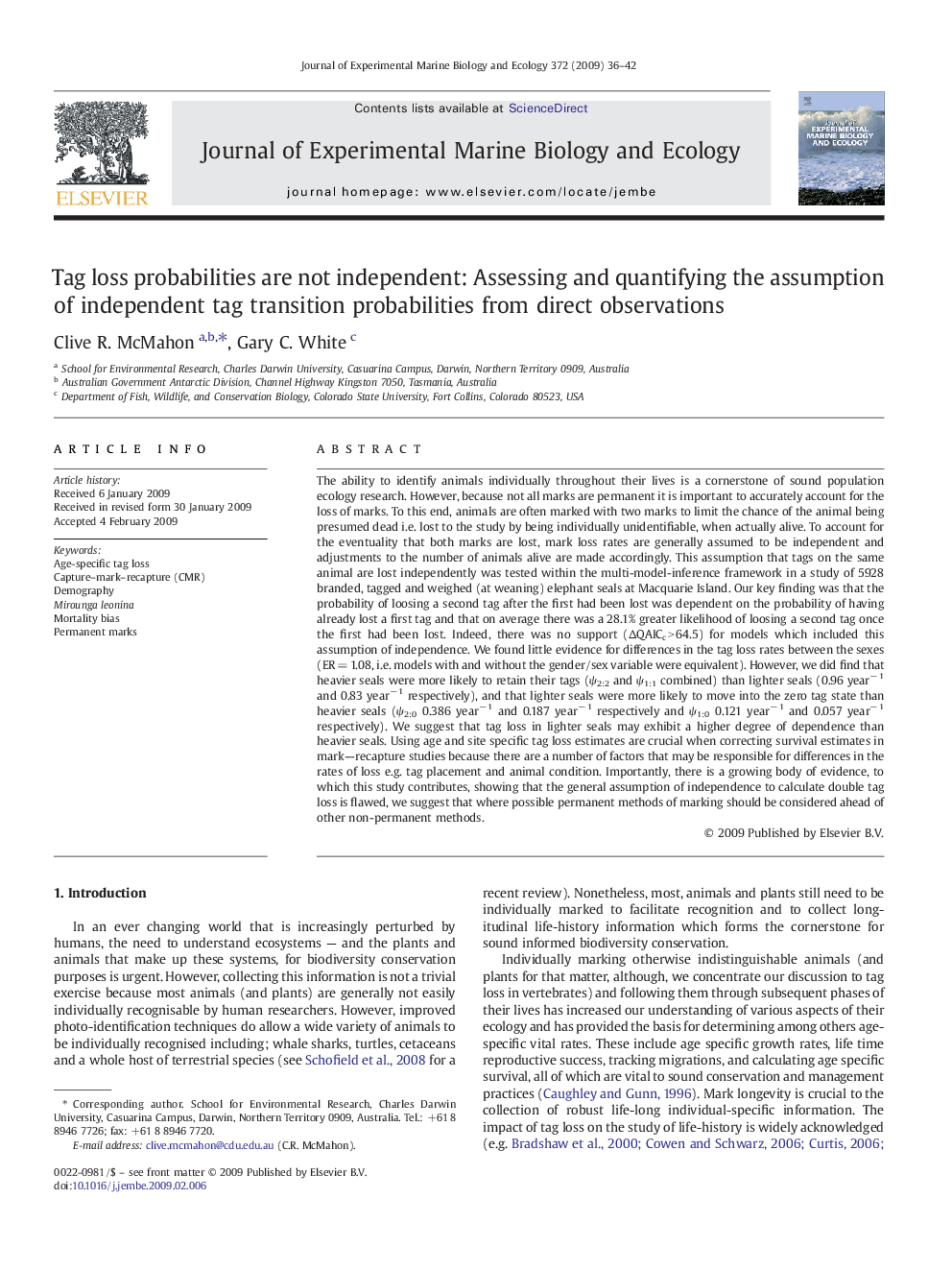| Article ID | Journal | Published Year | Pages | File Type |
|---|---|---|---|---|
| 4396993 | Journal of Experimental Marine Biology and Ecology | 2009 | 7 Pages |
The ability to identify animals individually throughout their lives is a cornerstone of sound population ecology research. However, because not all marks are permanent it is important to accurately account for the loss of marks. To this end, animals are often marked with two marks to limit the chance of the animal being presumed dead i.e. lost to the study by being individually unidentifiable, when actually alive. To account for the eventuality that both marks are lost, mark loss rates are generally assumed to be independent and adjustments to the number of animals alive are made accordingly. This assumption that tags on the same animal are lost independently was tested within the multi-model-inference framework in a study of 5928 branded, tagged and weighed (at weaning) elephant seals at Macquarie Island. Our key finding was that the probability of loosing a second tag after the first had been lost was dependent on the probability of having already lost a first tag and that on average there was a 28.1% greater likelihood of loosing a second tag once the first had been lost. Indeed, there was no support (ΔQAICc > 64.5) for models which included this assumption of independence. We found little evidence for differences in the tag loss rates between the sexes (ER = 1.08, i.e. models with and without the gender/sex variable were equivalent). However, we did find that heavier seals were more likely to retain their tags (ψ2:2 and ψ1:1 combined) than lighter seals (0.96 year− 1 and 0.83 year− 1 respectively), and that lighter seals were more likely to move into the zero tag state than heavier seals (ψ2:0 0.386 year− 1 and 0.187 year− 1 respectively and ψ1:0 0.121 year− 1 and 0.057 year− 1 respectively). We suggest that tag loss in lighter seals may exhibit a higher degree of dependence than heavier seals. Using age and site specific tag loss estimates are crucial when correcting survival estimates in mark–-recapture studies because there are a number of factors that may be responsible for differences in the rates of loss e.g. tag placement and animal condition. Importantly, there is a growing body of evidence, to which this study contributes, showing that the general assumption of independence to calculate double tag loss is flawed, we suggest that where possible permanent methods of marking should be considered ahead of other non-permanent methods.
